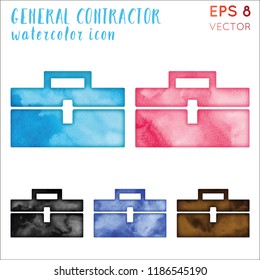Learn About The Ways In Which Seasonal Variables Can Influence The Success Of Business Outside Paint And Figure Out The Very Best Times To Achieve Lasting Results For Your Job
Learn About The Ways In Which Seasonal Variables Can Influence The Success Of Business Outside Paint And Figure Out The Very Best Times To Achieve Lasting Results For Your Job
Blog Article
Material By-Ford Rosendal
When you're preparing an industrial external paint project, seasonal elements can make or damage your outcomes. You'll intend to take into consideration exactly how temperature and humidity impact paint application and drying out times. Choosing the ideal period can ensure your paint sticks properly and lasts much longer. But which seasons are genuinely the best for this type of work? Let's check out the key elements that can influence your job's success.
The Impact of Temperature Level on Paint Application
When you're preparing an industrial outside painting project, the temperature level can substantially impact how well the paint sticks and dries out.
Ideally, you want to repaint when temperature levels range between 50 ° F and 85 ° F. If https://www.bhg.com/decorating/paint/how-tos/how-to-remove-paint-from-glass/ 's as well cold, the paint might not cure properly, resulting in concerns like peeling off or breaking.
On popcorn ceiling removal tool rental , if it's also hot, the paint can dry out also promptly, preventing appropriate attachment and causing an uneven surface.
You must additionally consider the time of day; early morning or late afternoon uses cooler temperature levels, which can be extra favorable.
Constantly inspect the producer's recommendations for the certain paint you're utilizing, as they commonly offer assistance on the ideal temperature level variety for optimum results.
Humidity and Its Result on Drying Times
Temperature isn't the only environmental variable that affects your commercial external paint task; humidity plays a considerable role as well. High moisture degrees can slow down drying out times significantly, impacting the overall top quality of your paint job.
When the air is filled with dampness, the paint takes longer to heal, which can result in issues like poor bond and a greater threat of mildew development. If you're painting on a specifically humid day, be gotten ready for extensive delay times between layers.
It's important to monitor local climate condition and plan accordingly. Preferably, aim for humidity levels in between 40% and 70% for ideal drying.
Maintaining these factors in mind ensures your job stays on track and provides a long lasting finish.
Best Seasons for Commercial Outside Paint Projects
What's the most effective time of year for your industrial exterior painting tasks?
Springtime and early loss are generally your best bets. During these seasons, temperature levels are mild, and humidity degrees are commonly reduced, developing suitable problems for paint application and drying out.
Prevent summer's intense heat, which can create paint to completely dry also swiftly, causing inadequate adhesion and surface. Likewise, winter season's cool temperature levels can impede appropriate drying out and curing, risking the longevity of your paint work.
Aim for days with temperatures between 50 ° F and 85 ° F for ideal outcomes. Remember to check the regional weather forecast for rainfall, as wet conditions can wreck your task.
Planning around these elements guarantees your painting job runs smoothly and lasts longer.
Conclusion
In conclusion, intending your business outside paint projects around seasonal factors to consider can make a considerable difference in the end result. By organizing work throughout the ideal temperatures and moisture degrees, you'll make sure much better attachment and drying out times. Bear in mind to keep an eye on regional weather forecasts and choose the correct time of year-- springtime and early fall are your best choices. Taking these steps will help you achieve a durable and specialist surface that lasts.
